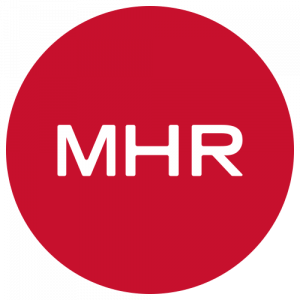17 October 2022
Unpacking pension auto enrolment and the impact on HR and payroll

The Government has approved drafts for new legislation to automatically enrol workers into a workplace pension scheme – set to be introduced in 2024. This enrolment process will have a significant impact on both employers and employees – and HR and payroll teams will need to adapt.
The background
It’s a historic moment, with Ireland the only member state of the Organisation for Economic Cooperation and Development (OECD) not to have a system of auto-enrolment to support workers with income in retirement.
Its introduction began in 2007 but has failed to progress across six governments since then, despite the UK introducing a similar scheme back in 2012. It’s designed to make it more straightforward for businesses to offer a workplace pension option and aim to encourage workers to save for retirement.
It’s estimated 750,000 workers will be part of the initial enrolment under the current proposal. Workers between the ages of 23 and 60 earning more than €20,000 euros a year, who are not already in a workplace pension scheme, will automatically be signed up in 2024. Anyone falling outside these parameters can still opt into the system if they wish.
Workers and their employers will initially pay 1.5% of their gross salary into the scheme. The State will then contribute 33% so for every €3 paid by the employee, the employer will also contribute €3 and the State will contribute €1.
Employees will have the option to “opt out” after six months but those who do will be re-enrolled two years later.
What this means for payroll
Organisations will need to prepare for the new legislation to ensure compliance from 2024. All employees, both existing and any new hires, will be automatically enrolled where eligible.
With the ability to opt out, communication will be key to ensure employees are accurately paid in line with their agreed pension contribution and have a full understanding of how this will impact their expected income.
Employee contributions will be measured as a proportion of a worker’s gross income before tax, but the amount will be taken from their net income, after tax. Educating employees with complete transparency over their pay is key to avoiding a deluge of employee queries once this legislation is introduced.
Payroll systems will need to adapt to avoid significant additional admin, ensuring this new deduction is accurately set up as needed for eligible employees. With the ability to opt-in for those who aren’t automatically eligible, payroll teams will need to review their processes to ensure employees are paid in line with their decision.
What this means for HR
Under the proposals, employers will have a year to communicate with their employees to ensure there is a full understanding of the scheme and how it will affect them. HR teams will need to provide advice on the four fund options, risk/return profiles, contribution amounts, tax implications and benefit amounts. For employees who don’t choose a fund, employees will be placed in a default fund.
HR teams will need to review employment contracts to include the new pension contributions. These changes will need to be communicated with employees well in advance of the 2024 deadline.
Onboarding programmes may also need to be reviewed to ensure any HR and payroll processes correctly adapt to include auto enrolment steps when setting up new hires.
We’re here to help
At MHR we are working closely with the applicable bodies including the Department of Employment Affairs and Social Protection to ensure we are compliant for the 2024 go live.

